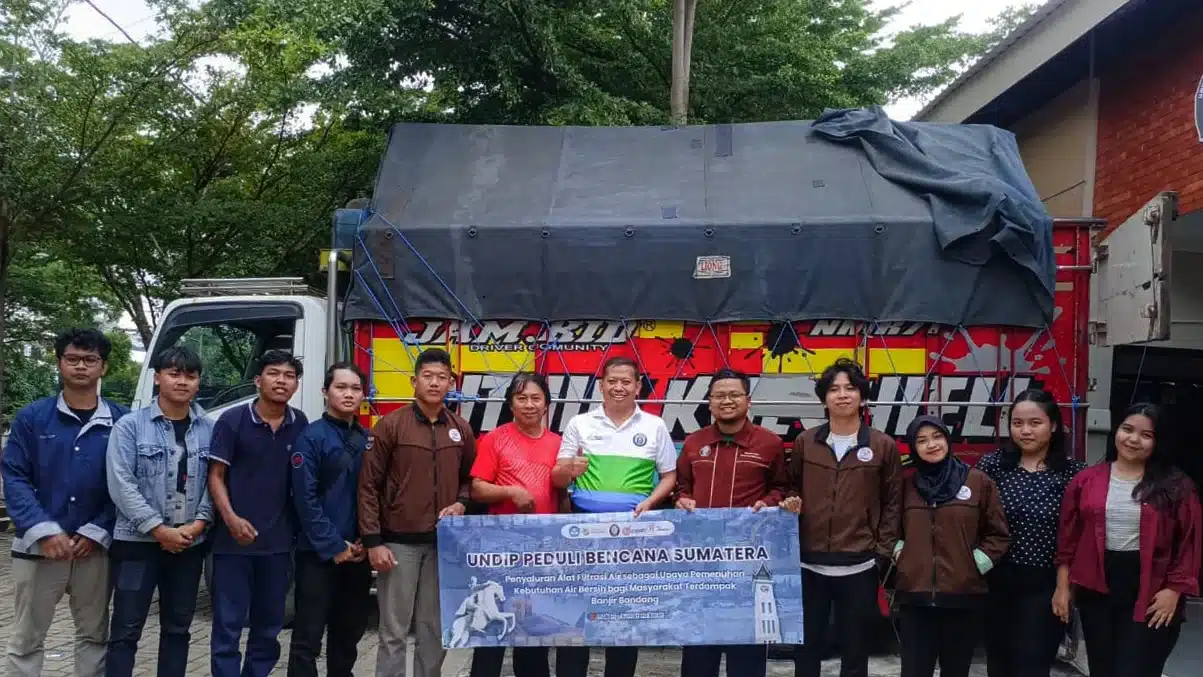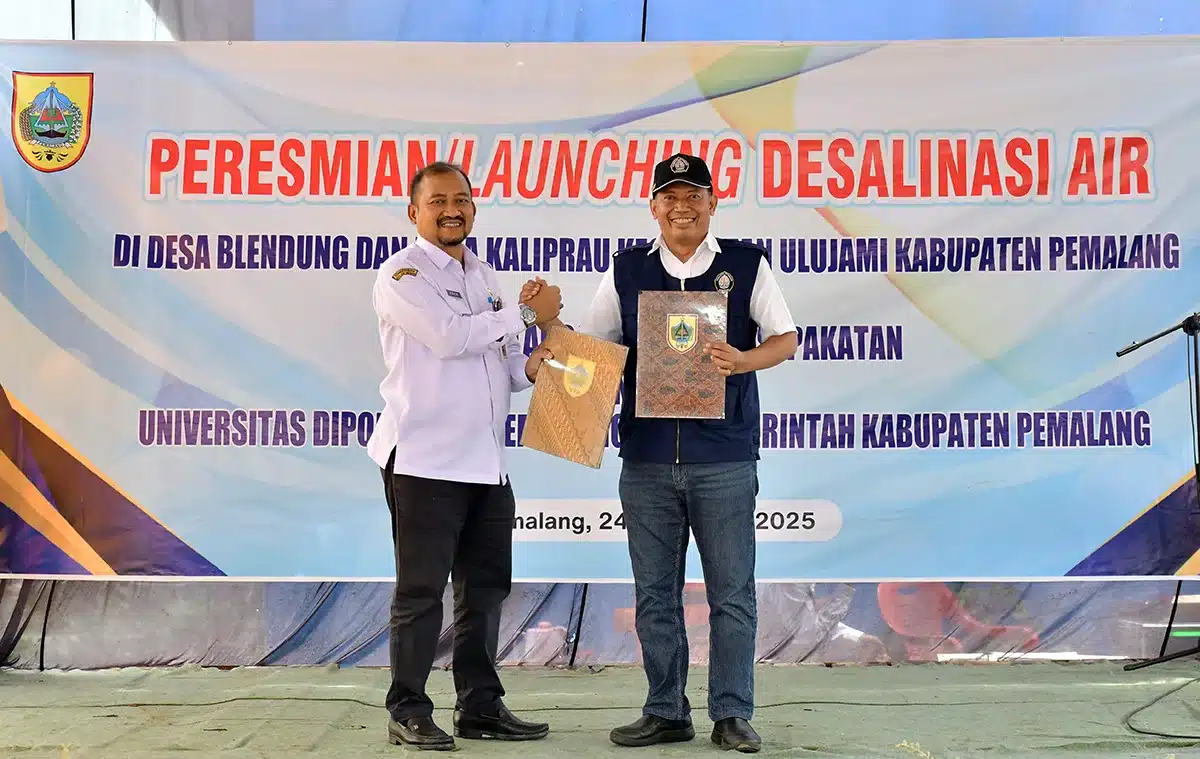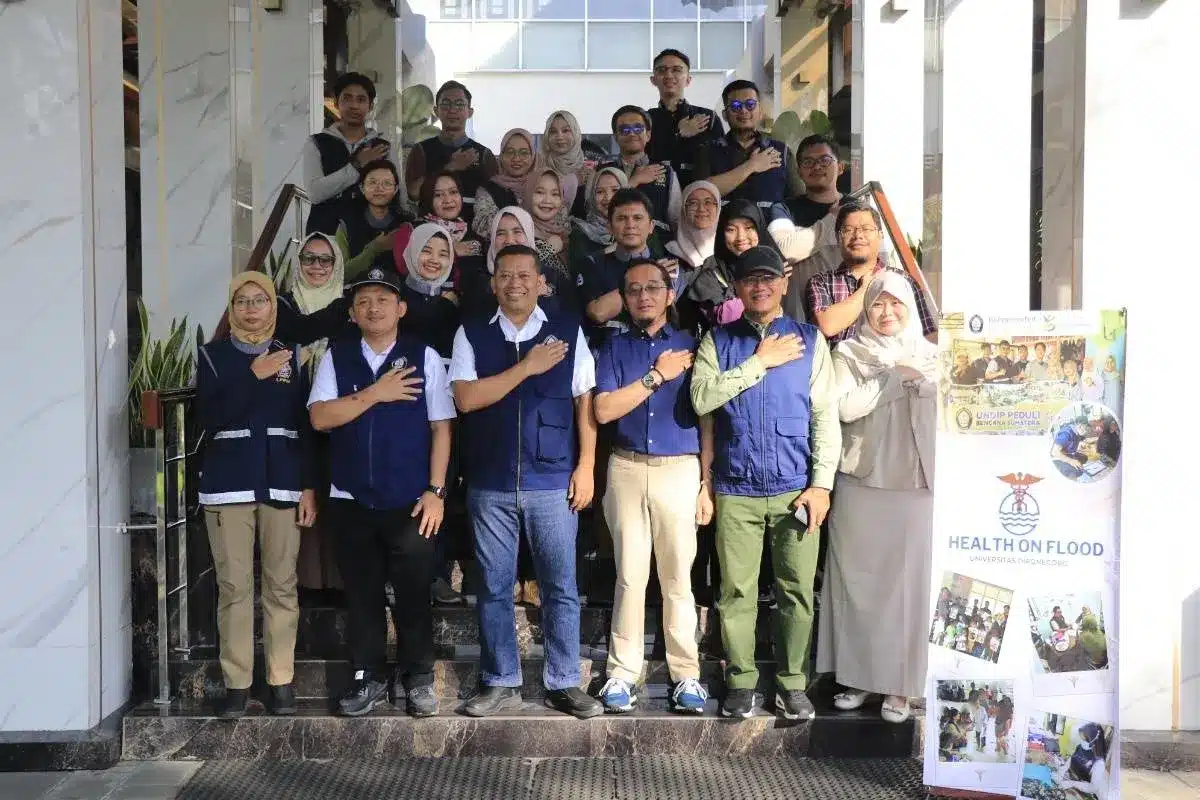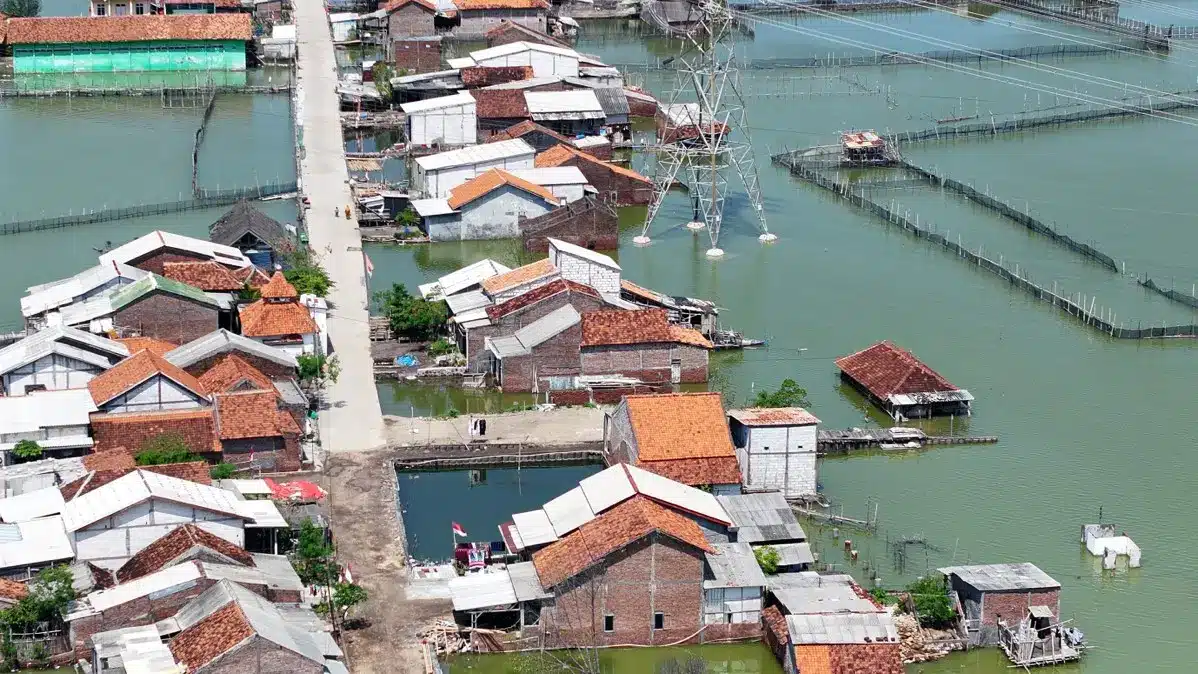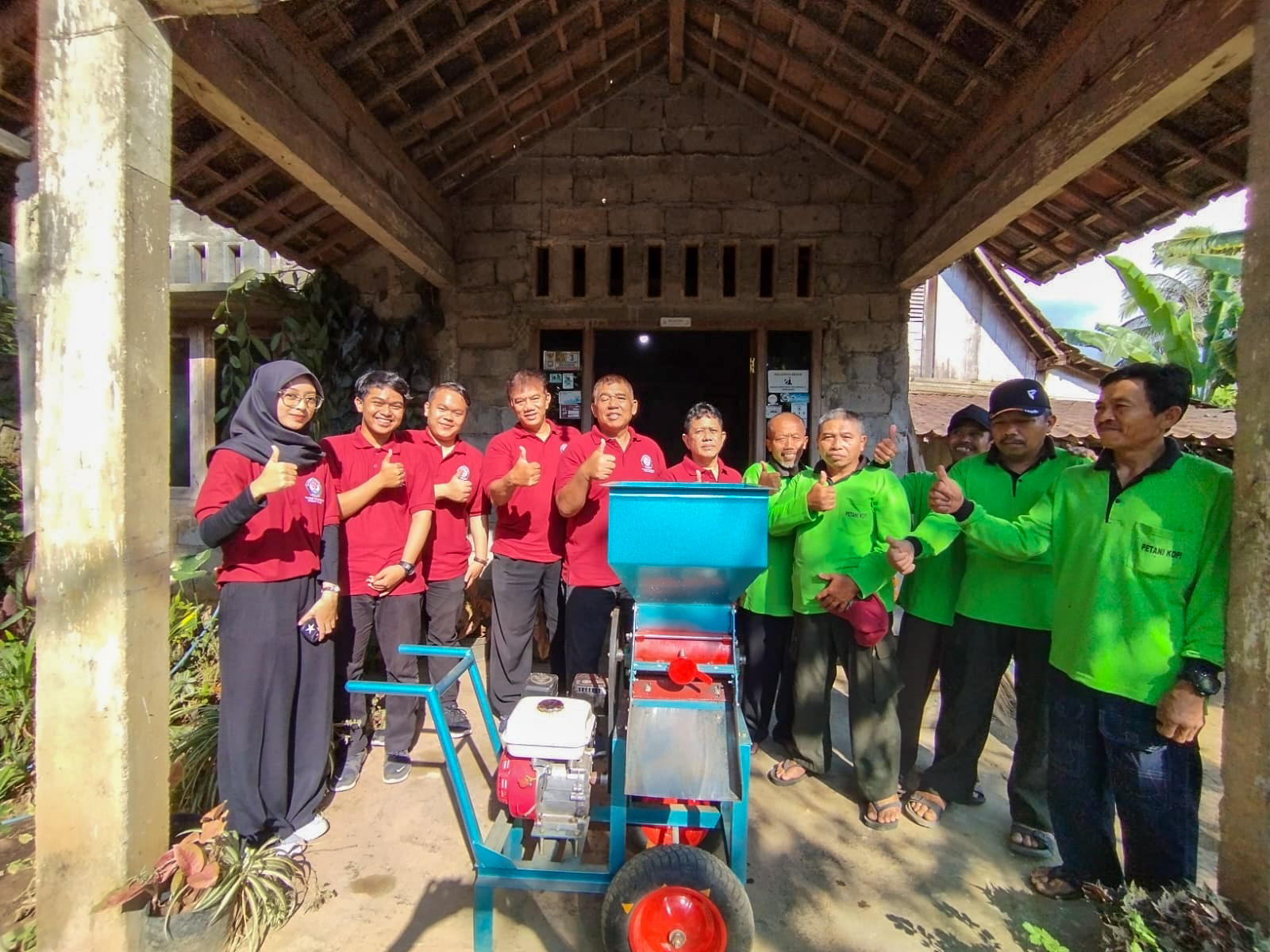It is well-known that coffee is a refreshing drink widely consumed and famous around the world. Coffee enthusiasts’ trends continue to rise along with needs, satisfaction, and lifestyle. Various innovations are often made as a driving step in increasing the efficiency and productivity of the coffee industry. The latest breakthrough comes from the UNDIP Vocational School team, also post-millennial innovators led by Drs. Sutrisno, M.T., by developing energy-efficient coffee roasting.
The team, consisting of several lecturers from the Mechanical Design Engineering (RPM) study program and lecturers from the Industrial Chemical Engineering Technology (TRKI) study program at the UNDIP Vocational School, has been funded through the “Matching Fund” Program 2024-2025 by Diksi, which is a downstream activity with a Technology Readiness Level (TRL) of 9. The team members include Hermawan Dwi Ariyanto, S.T., M.Sc., Ph.D.; Dr. Riana Sitawati, CA, CPA, CMA, CSRA; Didik Ariwibowo, S.T., M.T.; and Mohamad Endy Julianto, S.T., M.T., assisted by MBKM students in collaboration with industrial partner CV Anugrah Agung Semarang.
Sutrisno mentioned that referring to IPR No EC00202049897 with the invention “Manual Procedure for Robusta Coffee Roasting” has the potential for the production of coffee roasting equipment, commercialization, and very prospective market opportunities. However, the coffee roasting innovation applied in the coffee industry still needs to be expanded to the KUB Gunung Kelir Ungaran coffee. In terms of technology, the resulting coffee roasting invention can reduce energy consumption by up to 20% compared to commercial coffee roasting available in the market. “Nevertheless, regarding this coffee roasting invention, there is still a problem, namely improving the quality of the roast due to the Maillard reaction. Therefore, the utilization of energy-efficient, efficient, and quality roasting equipment in the form of Voca-roaster as a commercial, industrial product requires the development of agitation technology and roasting geometry,” explained Sutrisno. “So far, conventional roaster heaters available on the market use an LPG burner with a capacity of 450 gr/hour. The roasting process causes thermal energy consumption for the dark roast to be very high, reaching 10.5 MJ/kg of coffee or equivalent to 3 kWh thermal/kg of coffee or Rp. 1,500-/kg of coffee,” he added. “Therefore, through the downstream process, Voca-roaster is predicted to increase the efficiency of commercial scale roasting by reducing thermal energy consumption to 0.5 kWh thermal/kg of coffee. Voca-roaster is a roaster with a flame mixed with recirculated air in the combustion chamber supplied to the drum, resulting in a relatively low flame temperature drop,” said Sutrisno. “The drum wall is designed to consist of two parts, namely the lower part of the drum and the upper part of the drum. The surface of the lower part of the drum is directly connected to the combustion chamber, while the surface of the upper part of the drum is insulated with a thermal insulator,” he explained.
Furthermore, Sutrisno, who owns more than 20 patents and IP, explained that heat from the lower part of the drum propagates through the drum wall and enters the drum’s interior, heating the drum’s interior. The heat from the drum’s interior surface and the hot space inside the drum will provide modes of conduction and natural convection heat transfer. The coffee beans inside the drum will absorb this heat. To ensure even heat distribution to the coffee beans, a unique agitator is designed inside the drum space, targeting thermal energy consumption for the Voca-roaster at 2.5 kWh thermal/kg of coffee.
“Apart from energy savings in roasting, the development of the Voca-roaster also reduces the occurrence of the Maillard reaction, which causes the quality of coffee beans to decline. When the coffee beans start to turn brown during the yellowing process, there is a mixture of carbon dioxide (CO2) gas and water that diffuses simultaneously inside the coffee beans,” he explained.
Sutrisno also added that when the diffusion pressure of these two compounds is high, the coffee beans will start to open, and at this moment, they will crack. This phenomenon can be recognized by a crisp sound, like the sound of cracking nuts. The agitation technology and roasting geometry enhance and develop the distinctive flavors of coffee beans. After the first crack phase, caramelization occurs, forming flavors like molasses and caramel.
Sutrisno revealed that the benefits and socio-economic impacts generated from this innovative product include promoting national independence and food sovereignty programs, especially the production of energy-efficient and quality roasting machines; mastering agitation technology and roasting geometry becomes an attractive investment opportunity for industrial coffee equipment providers to commercialize Voca roasting machines; mass production innovation of Voca roaster machines will open new job opportunities and boost the national production of quality coffee.
Other benefits include increased competitiveness by utilizing local raw materials and fabrication, resulting in products with 100% Domestic Component Level (TKDN); the availability of reliable and efficient technology for producing Voca roaster machines will empower coffee farmers in coffee plant cultivation, and this activity forms a network of collaboration among researchers, practitioners, and industries from various fields of expertise and competence with the support of available resources,” concluded Sutrisno. (Endy-SV & DHW-PR)



